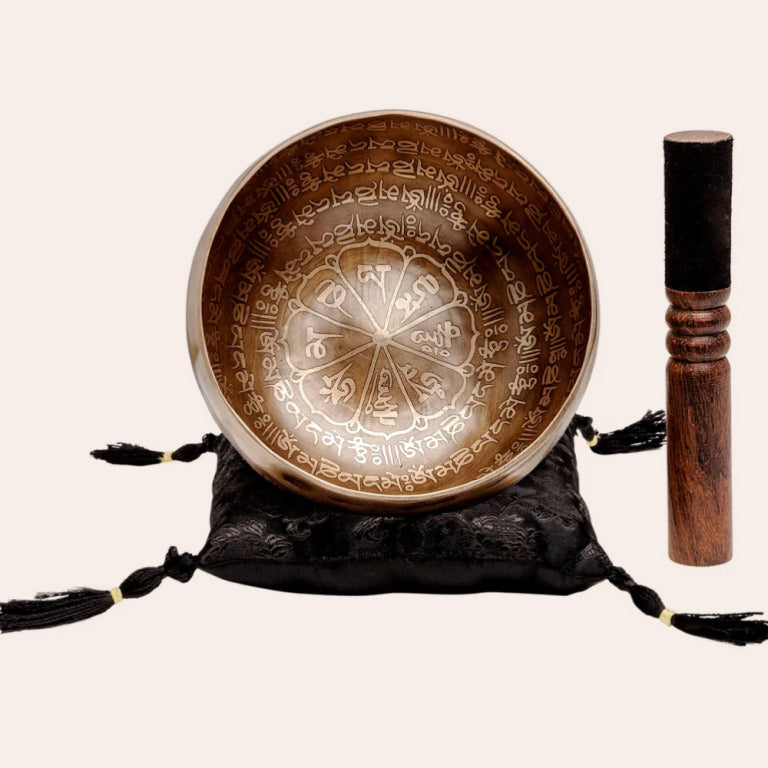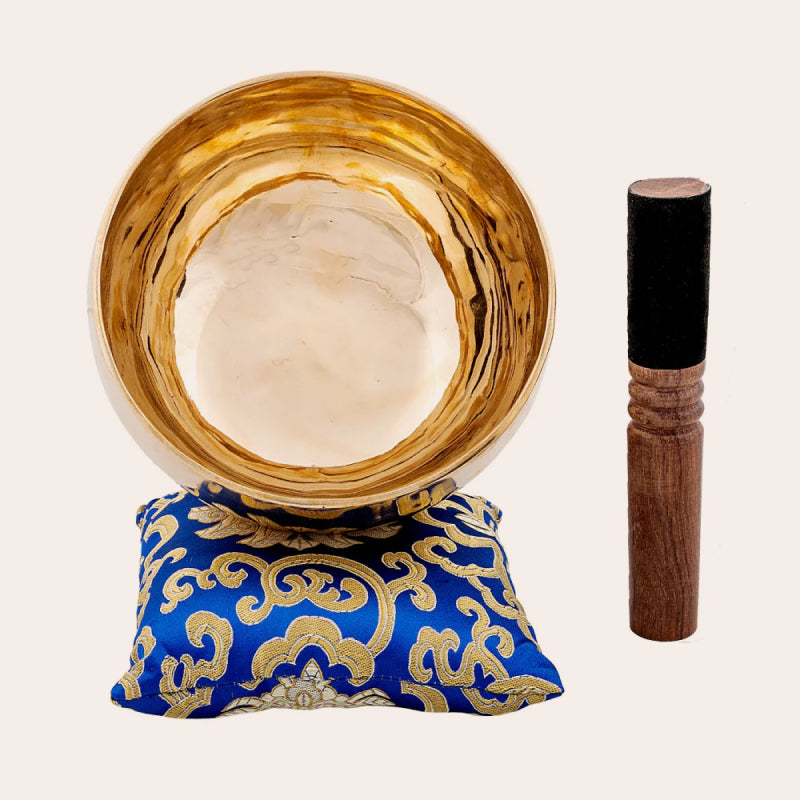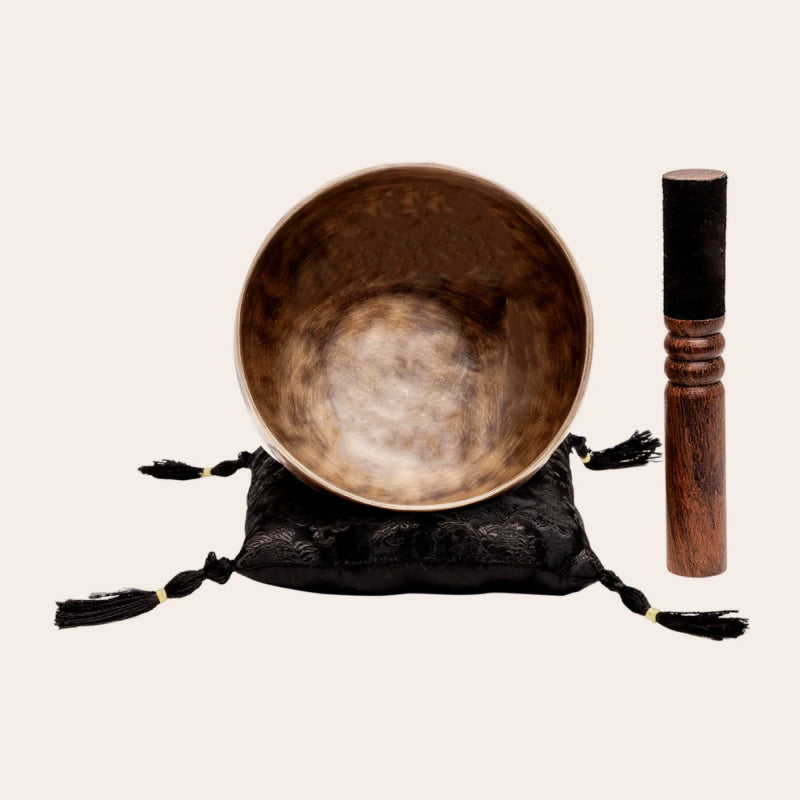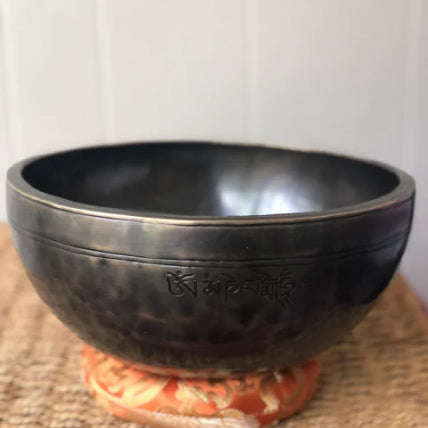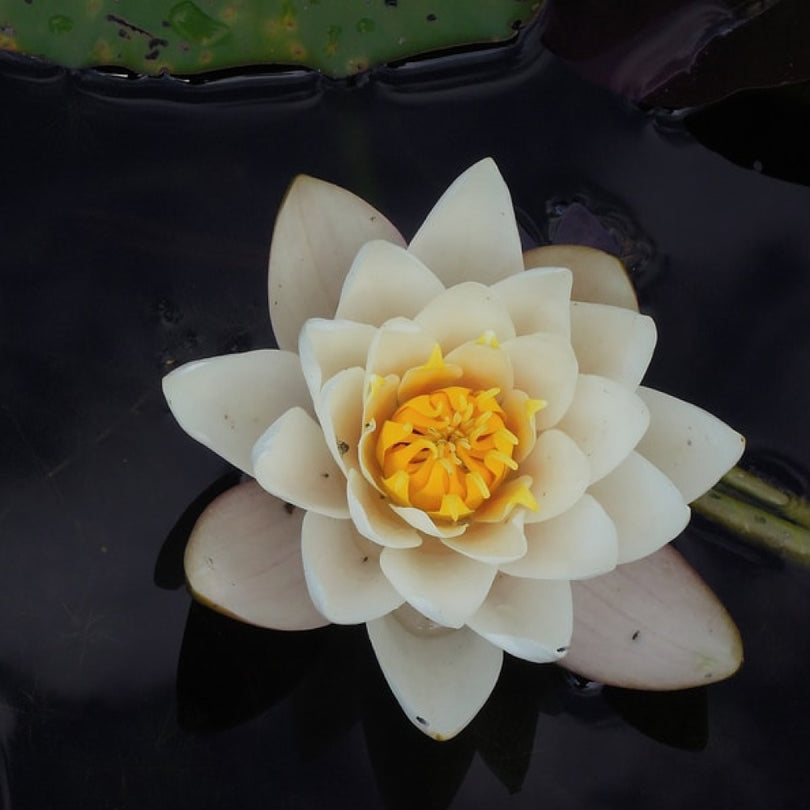In the world of Tibetan Singing Bowls, two distinct styles beckon us to embark on a journey through time and sound—the Naga and Mani Singing Bowls. These extraordinary instruments offer glimpses into the past, hinting at ancient rituals and traditions shrouded in mystery and allure.
The pedestal design of Naga Singing Bowls provides an effortless way to produce sound, played around the rim rather than with a striker. This results in a resonant and brilliant sound that appeals to both sound therapists and healers.
The pedestal enhances the therapeutic experience, allowing for a comfortable and controlled grip during meditation, relaxation, and sound therapy sessions.
The mystery surrounding their origins adds to their allure, making Naga bowls cherished treasures among collectors and enthusiasts.
Characterized by their thick, flat bottoms that taper slightly at the edges, these antiquated pieces stand as testaments to the craftsmanship of the past. Their distinctive design, with ledges that extend and are directed towards the bowl, reveals intricate concentric circles and lines that speak to their historical heritage.
Some bowls even feature a circle in the center of their outer walls and visible marks that speak to their historical heritage. Now, even more modern made bowls are often washed with acid to give the newer bowls an antiqued look.
When struck with a hardwood mallet, Mani style singing bowls unleash a symphony of sound that transcends time and space. The charm of these ancient instruments lies not only in their unique sound but also in the belief that striking them with such precision produces a soothing resonance that resonates with the soul.
Naga and Mani style singing bowls offer a window into the rich tapestry of Tibetan sound healing traditions. Each with its own unique characteristics and appeal, these ancient instruments continue to captivate and inspire, inviting us to explore the mysteries of the past while embracing the transformative power of sound.
Naga Singing Bowls:
Unlike their counterparts, Naga, or Pedestal bowls stand with inherent poise, their unique design negating the need for cushions. Crafted with a distinctive construction where the bowl and its supporting pedestal are permanently forged together, Naga bowls offer a glimpse into the craftsmanship and artistry of centuries past. In addition to their relative scarcity, little is known about their origins and manufacturing dates, lending an air of mystery to these fascinating instruments.The pedestal design of Naga Singing Bowls provides an effortless way to produce sound, played around the rim rather than with a striker. This results in a resonant and brilliant sound that appeals to both sound therapists and healers.
The pedestal enhances the therapeutic experience, allowing for a comfortable and controlled grip during meditation, relaxation, and sound therapy sessions.
The mystery surrounding their origins adds to their allure, making Naga bowls cherished treasures among collectors and enthusiasts.
Mani Singing Bowls:
Thought to have emerged between the 16th and 18th centuries, Mani singing bowls captivate with their peculiar design and unparalleled resonance.Characterized by their thick, flat bottoms that taper slightly at the edges, these antiquated pieces stand as testaments to the craftsmanship of the past. Their distinctive design, with ledges that extend and are directed towards the bowl, reveals intricate concentric circles and lines that speak to their historical heritage.
Some bowls even feature a circle in the center of their outer walls and visible marks that speak to their historical heritage. Now, even more modern made bowls are often washed with acid to give the newer bowls an antiqued look.
When struck with a hardwood mallet, Mani style singing bowls unleash a symphony of sound that transcends time and space. The charm of these ancient instruments lies not only in their unique sound but also in the belief that striking them with such precision produces a soothing resonance that resonates with the soul.
Naga and Mani style singing bowls offer a window into the rich tapestry of Tibetan sound healing traditions. Each with its own unique characteristics and appeal, these ancient instruments continue to captivate and inspire, inviting us to explore the mysteries of the past while embracing the transformative power of sound.

